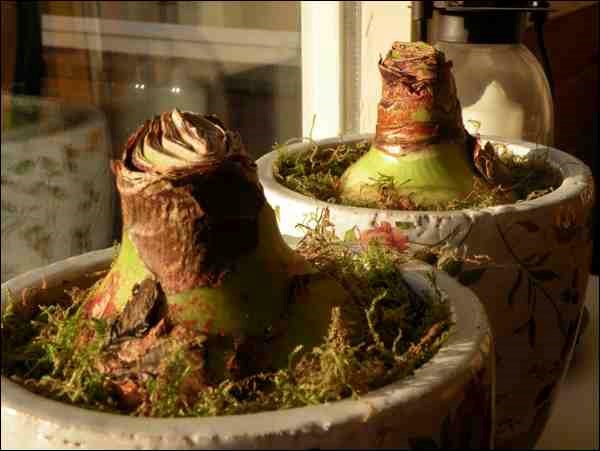Always a cheery addition to the early winter, amaryllis flowers have graced many a home for just about two centuries. Simple to grow and bring into flower, even those with the blackest of thumbs can succeed.
Purchase large, firm bulbs that show only the scars or stubs of old foliage but no new leaves. Bigger bulbs are always better, producing more flowers. Choose a pot (with drainage holes) that is eight to 10 centimetres wider than the bulb. Once growth begins, the root mass can become quite extensive. Once in bloom, the plant is top-heavy, so a heavier pot (emade of clay or terracotta) will counterbalance it better than a plastic one and prevent toppling over.
Use a light, well-drained potting mixture containing some peat moss. Place the bulb on top of two to five centimetres of soil and then fill the remaining space so that about two-thirds of the bulb is covered and one-third remains exposed above the potting mixture. Firm the soil, water well and allow it to drain. Discard any water in the saucer.
Place the pot in a sunny warm room with a temperature range of 18-25C. Night time can be slightly cooler. Water sparingly until the first shoots appear. Once growth begins, water whenever the soil is dry, ensuring it is evenly moist but not overly wet. Do not over-water as this may cause the bulb to rot. Turn the pot every few days to ensure the foliage growth is evenly balanced. Cultivars with larger blooms may need staking to prevent toppling over.
Fertilize monthly with a complete soluble houseplant fertilizer (20-20-20) while in active growth, remembering that it's generally better to under fertilize rather than to over fertilize. The bulb nourishes the current year's bloom, but good nutrition will ensure large, healthy bulbs and flowers for future years.
Once the flower buds begin to open (six to eight weeks after potting up), move the pot to a cooler location with indirect light to prolong flowering and promote more intense colouring. Remove flowers as they fade.
After flowering, return the pot to a sunny location and water and feed regularly to promote healthy dark green foliage. Food manufactured in the leaves will enlarge and feed the bulb that has shrunk during flowering. If cared for properly, amaryllis bulbs should increase one to two centimetres in diameter each year.
Your amaryllis can spend its summer outdoors. Plant the bulb still in its pot in a semi-shaded location. Protect from spring and fall frosts. As the leaves turn yellow, remove them with a sharp knife or a gentle tug. Bring the plant indoors in September and store in a cool (12 C) dry location like your garage until signs of growth appear, in about two months - and begin the cycle again.
Sara Williams is the author of the new, revised and expanded Creating the Prairie Xeriscape as well as the Saskatoon Forestry Farm Park & Zoo: A Photographic History. She will be leading tours to Morocco, Turkey and Ireland in 2015. Call Ruth at 1-888-778-2378 ([email protected]) for information.
- This column is provided courtesy of the Saskatchewan Perennial Society (www.saskperennial.ca; [email protected]). Check out our Bulletin Board or Calendar for upcoming garden information sessions (Nov. 23:My Garden Project - a showcase of horticulture endeavours around town from training young gardeners to a family building a park).




